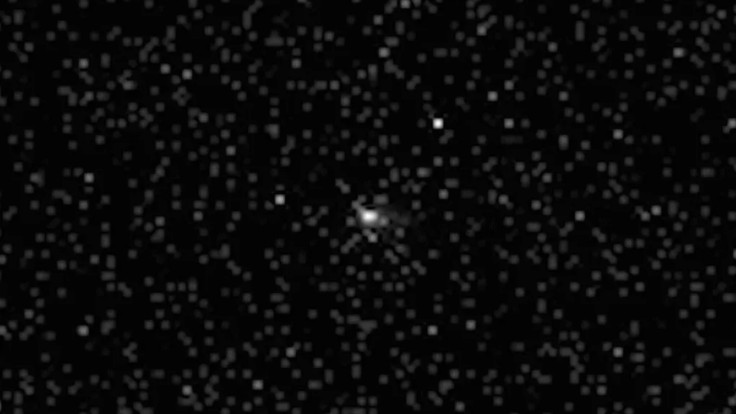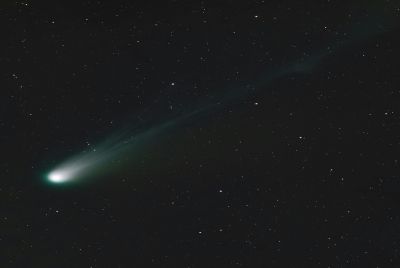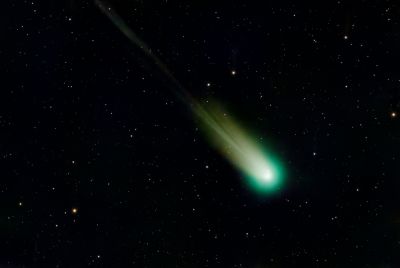Where Did 3I/ATLAS's Tail Go? Interstellar Visitor Reappears Bare After Solar Encounter
Interstellar comet 3I/ATLAS stuns scientists by returning bare after perihelion, raising origin questions

Astronomers have been left astonished after the interstellar object 3I/ATLAS reappeared in fresh telescope images, looking completely bare — with no visible tail.
The discovery has challenged long-held assumptions about how comets behave after passing close to the Sun, and reignited speculation about the object's mysterious composition and origin.
A Naked Return After Solar Passage
Images captured by the R. Naves Observatory in Spain on November 5, 2025, show 3I/ATLAS as a compact, tailless nucleus. Typically, solar radiation causes comets to emit bright streams of dust and gas as surface ice vaporises, forming a glowing tail. But this time, 3I/ATLAS displayed none of those classic features.
The absence of a tail has led researchers to wonder whether the object is truly a comet at all. 'We expected an active coma after perihelion,' one astronomer remarked, 'but it's gone quiet — completely inert.'
Shrinking and Possible Disintegration

Further analysis suggests 3I/ATLAS may have shrunk by around 13 per cent since its close solar pass in late October 2025. According to data shared by Spain's Sabadell Observatory, the loss could indicate surface sublimation or partial disintegration, though scientists remain cautious.
If confirmed, this shrinkage would mark the first time an interstellar object has been observed losing mass in such a manner. The lack of a tail implies that 3I/ATLAS may not contain volatile compounds such as water ice or carbon dioxide, which typically fuel cometary outgassing.
Solar Storms and an Unexpected Calm
Adding to the intrigue, 3I/ATLAS remained unaffected by a series of recent solar storms that would normally amplify tail formation. Some unverified images circulating online suggest its trajectory might have shifted slightly, though experts emphasise there is no confirmed deviation from its predicted hyperbolic path.
Despite increased solar activity, the object has shown no dust or gas emissions. Scientists at NASA's Jet Propulsion Laboratory continue to monitor the object as it approaches its next major milestone near Jupiter in March 2026, with the intention of gathering more data on its composition and motion.
A Hybrid Between Comet and Asteroid
3I/ATLAS's behaviour continues to blur boundaries between comets and asteroids. The object follows a hyperbolic trajectory — confirming its interstellar origin — but its combination of past jet activity and current dormancy defies simple categorisation.
By contrast, ʻOumuamua (2017) displayed no tail or jets, while 2I/Borisov (2019) behaved like a classic comet. 3I/ATLAS, meanwhile, seems to have switched identities — active during its approach and inert after its solar pass.
Astrophysicists suggest this might mean the comet has lost its outer volatile layers or that its jets have ceased due to rotational or compositional changes. Others propose that it could represent a new, intermediate class of interstellar debris — structurally solid, low in volatiles, and highly resistant to solar heat.
Implications for Interstellar Science
The behaviour of 3I/ATLAS is prompting scientists to reconsider how interstellar objects interact with solar radiation. If the comet lacks volatile materials, it may represent a new class of interstellar debris — one that is inert, solid, and resistant to solar heating.
Alternatively, the tail loss may be temporary, with emissions resuming as the object moves further from the Sun. Continued observation will be critical in determining whether 3I/ATLAS is a comet stripped of its outer layers or something altogether different.
3I/ATLAS's reappearance without a tail has baffled astronomers and challenged long-held assumptions about cometary physics. As the object continues its journey through the solar system, its behaviour may reshape our understanding of interstellar visitors and the secrets they carry.
© Copyright IBTimes 2025. All rights reserved.




















